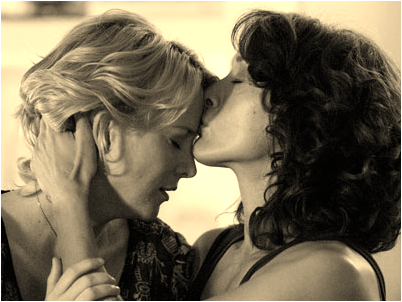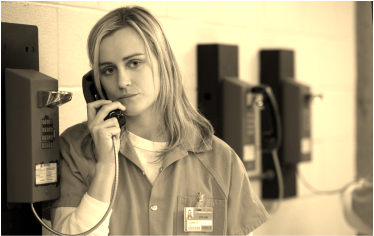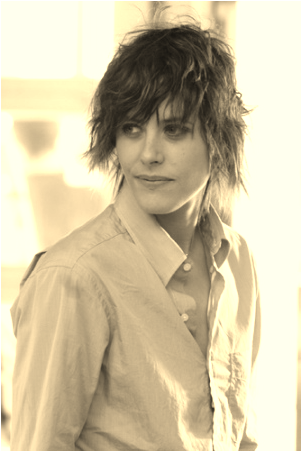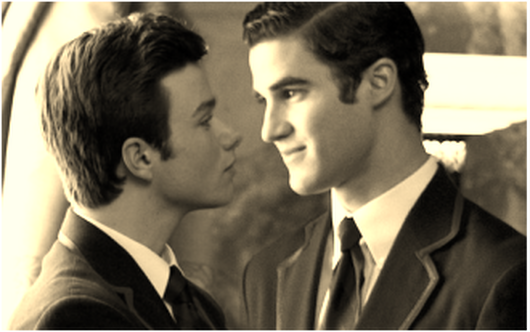| There’s no doubt when watching television shows which champion queer experience that bisexual erasure remains the unspoken elephant in the room of popular culture. Despite its many advancements in terms of queer visibility, contemporary television struggles to depict bisexual characters in a meaningful and representative way. Bisexual erasure is the tendency to “ignore, remove or falsify” evidence of bisexuality, and it’s alive and well in popular culture. In the absence of identifiable character representation, bisexual people continue to feel as if they don’t really ‘fit’. The more sexuality is portrayed as a straight/gay binary the more illegitimate attraction to more than one gender feels and the more marginalised bisexual people become. While not wishing to detract from the positive work certain television shows do in their efforts to be as inclusive of the LGBT experience as possible, these efforts make it even more frustrating to see bisexual experience represented in a way which wholly fails to grapple with the identity in queer-positive television. Looking at a handful of shows, this blog post demonstrates examples of bi-erasure in popular television shows and explores why this issue matters. |
By way of response, Kurt says that “bisexual is a lie gay guys tell in high school to hold hands with girls in the corridor so they can feel normal for a change," an echo of one Carrie Bradshaw's insistence that "I'm not even sure bisexuality exists. It's just a layover on the way to Gaytown." Although there are attempts made to call Kurt out on his hypocrisy, the fact that this kind of comment is par for the course for bisexuals is never addressed in a meaningful way. Instead of actually making Blaine bisexual and tackling biphobia in a nuanced way, by the episode, Blaine is “100% gay” and the exchange doesn’t come up again for the remainder of the show. The rebuttal of Kurt's argument is never fully realised, and the misnomer that is common for so many bisexuals is perpetuated.

Queer as Folk in the UK and the US were ground breaking pieces of television and there are many positive things to be said about the way the shows put LGBT communities in the mainstream spotlight. Yet even in a show written for and about the queer community, bisexuality remains invisible. While this blog will feature posts on Queer as Folk, exploring both positive (and less positive) aspects of the show, in the context of a post on bisexuality there is very little to be said. Bisexuality simply doesn't exist in Queer as Folk.
If bisexuality is invisible in Queer as Folk, The L Word went further than erasure and veered into overt biphobia. There is real promise at the start of the first series, when two of the main characters (Alice and Jenny) identify as bisexual. With Alice's character in particular early attempts are made to address the stigma bisexuals can face in queer communities. However, the portrayal of bisexuality – together with certain characterisations – go downhill from Season 1. While transitioning from a bisexual woman to identify as a lesbian is a valid experience, The L Word teeters on the verge of suggesting all bisexuality is transitionary by not offering a single relatable bisexual character whose sexuality doesn't fall into the gay/straight binary by the end of the series. This is not unusual in mainstream television. All too frequently sexual experimentation with someone of the same gender might be mentioned or briefly explored and it is either the male/female relationship that is given the most airtime and held as being the most ‘valid’ or the experimentation forms part of a wider coming out story. While The L Word at least doesn't 'straighten out' its bisexuals as earlier mainstream shows have sought to do in the past, in a show with such a queer positive queer premise it is even more disappointing to see how The L Word fails to craft a positive portrayal of sexualities other than gay, and straight.
The idea that bisexuals are lying or that they are confused about their sexual identity reinforces the gay/straight binary and further invalidates bisexual identity and experience. By the end of The L Word, both Alice and Jenny, who began as bisexual characters, not only identify as lesbians, but they show hallmarks of biphobia. Alice describes bisexuality (albeit for comedic relief) as “gross” and Jenny excludes Tina from the group for the “heterosexual privilege” she enjoys in her relationship with Henry, when she begins her relationship with a man. Tina is shunned by her friends for her relationship, and when she confronts the question of her sexuality she veers from mention of her past "heterosexuality" to her lesbian identity and subsequent desire to, during her relationship with Henry, identify as a "political-lesbian" (which is problematic in and of itself).
Eventually, Tina returns to Bette and reaffirms her lesbian identity. Bisexuality as a possible sexual identity is never grappled with in a satisfying manner but even when Tina becomes a possible character for such exploration, her story serves only to reinforce the stereotype that a bisexual is incapable of a meaningful relationship without yearning for something other. While the experiences Jenny, Alice and Tina have might each be realistic portrayals of issues faced as people with queer identities negotiate the complex issue of sexuality, not one of those experiences seeks to counter biphobia, provide an identifiable bisexual character or acknowledge bisexuality as a valid, sexual identity separate from the heterosexual/homosexual binary. It is the issue of the absence of anything positive to balance the negative biphobic stereotypes which are at the heart of why The L Word fails so desperately in terms of bisexual representation. It is important to note at this juncture that I recognise how important a show like The L Word was to young, queer women, and that is why this one particularly hurts.

Piper Chapman is to all intents and purposes bisexual (or somewhere on the non-binary sexuality spectrum), yet the word is never used to describe or label Piper’s sexual identity. Instead she is referred to as an “ex-lesbian” which accords with the way the real-life Piper (on whom the story is based) used to identify, before getting engaged to a man and identifying as bisexual. Piper Chapman, however, is never expressly labelled – either by herself or by others – as bisexual, save for one throwaway comment by Larry (her former fiancé). It is not clear to me what the writers intend to do with Piper's sexuality, or why there appears to be such a stigma around embracing the label of bisexuality for Piper's character. It does not seem as if Piper is confused or transitioning. She appears to be deeply in love with Larry when the show starts, and both the flashbacks and present day scenes with Alex Vause show (again) a deep love and sexual connection between the two women.
Perhaps the writers of Orange is the New Black would prefer that Piper’s sexuality isn’t given a label – there is validity in exploring fluidity of sexuality and to address the very real fact that many people don’t wish to use labels to identify themselves, simply viewing their sexuality as somewhere on a spectrum. However, it seems peculiar that a show as progressive as Orange is the New Black would embrace labels and explore lesbian and transgender characters but would, once again, miss the mark completely on bisexuality. For the large number of people that do identify as bisexual, the label is important and with it comes challenges and issues which are specific to that identity and which a show like Orange is the New Black is well placed to explore.
I hope to see more bisexual characters positively portrayed in mainstream television, without falling into one of the tropes which so often crop up when the issue of bisexuality rears its head. When book canon characters who identify as bisexual (Piper Chapman in Orange is the New Black, Emily Fields in Pretty Little Liars) are not utilised to explore bisexuality in popular culture, an identity which makes up a large part of the LGBT community continues to be overlooked. The erasure of bisexual persons from contemporary television shows leads to marginalisation and the continued propagation of harmful misunderstandings about bisexuality. Popular culture has the power to influence and educate, as well as providing a safe space for young adults growing up and grappling with their own sexuality. It is important that bisexual people seeking out LGBT positive shows can find representation and acceptance in communities in a way which can hopefully translate into real-life acceptance and understanding.

